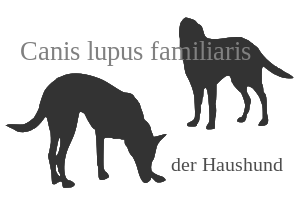Lithuanian hound
| Lithuanian Hound (Lietuvių Skalikas) | |||
|---|---|---|---|
|
|||
| Not from the FCI recognized | |||
| Origin : | |||
| Withers height: |
Males: 52–60 cm, ideally 59 cm. |
||
| Weight: |
not fixed |
||
| Breeding standards: | |||
| List of domestic dogs | |||
The Lithuanian Hound (Lithuanian: Lietuvių Skalikas; English: Lithuanian Hound) is a dog breed not recognized by the FCI . The breed is recognized nationally by the Lithuanian Kennel Club (FCI member).
Origin and history
The first descriptions of hounds in the area of present-day Lithuania date back to 1566. A detailed description of the breed dates from 1922 in the book Medžiotoj metai by V. Korsako. The breed was apparently on the verge of extinction at the time. From 1957, the breeder Bonnie Goštautas (kennel name Tent ) dedicated herself to breeding the breed. In 1966 the first breed standard was published, in 1983 it was revised. In 1977, as a result of numerous animals killed in combat with wild boars , the number fell to well below 100. In 1981 the first exhibition of this breed took place. 62 animals took part. In 1986 an estimated 500 specimens of the breed existed again.
description
The Lithuanian hound is a robust 48 to 60 cm hound . Their smooth fur is black with a distinct medium to dark brown burn on the legs, around the muzzle, in front of the chest, around the base of the tail and above the eyes. The tail is black throughout and also has short hairs. It is usually carried upright, half curled; In the case of high concentration and fear, it is carried rolled up on the hind legs, with the last third pointing upwards.
The dog has less heavy bones than comparable dogs of his size, which gives him speed and stamina in driven and chase. Nevertheless, the Lithuanian hound has a muscular body. Her head is strong but well proportioned; moderately wide between the ears. The eyes are brown to amber in color. The ears are moderately long and hang close to the cheeks, are rounded at the tips. The snout is of medium length; the lips hang somewhat in the rear third.
The neck is only moderately long, very strong, but without a dewlap . The dog's back line is straight; his chest is long, deep and broad. The legs are vertical; the hind legs are very muscular and strong. The hocks are strong and straight. The feet are strong without being fat. The pads are well proportioned and the toes are compact.
Individual evidence
- ↑ a b Breed standard on the website of the Lithuanian Kennel Club (Lithuanian), accessed on April 24, 2014
- ↑ Wilcox, Walkowicz: Kynos-Atlas Hunderassen der Welt Translation of the American edition by Helga and Dieter Fleig . Kynos Verlag Mürlenbach Eifel, ISBN 3-924008-93-0 , page 584, Lithuanian Hound
Web links
- Article for FCI magazine 2010 Published on the website of the Lithuanian Cynological Association with information about the breed
- Breed standard on the website of the Lithuanian Umbrella Association for Dog Breeding (Lithuanian)
literature
- Hans Räber : Encyclopedia of pedigree dogs. Origin, history, breeding goals, suitability and use. Volume 2: Terriers, running dogs, pointing dogs, retrievers, water dogs, greyhounds. Franckh-Kosmos, Stuttgart 1995, ISBN 3-440-06752-1 , p. 375.
- Wilcox, Walkowicz: Kynos-Atlas dog breeds of the world translation of the US. American edition by Helga and Dieter Fleig. Kynos Verlag Mürlenbach Eifel, ISBN 3-924008-93-0 , page 584, Lithuanian Hound
